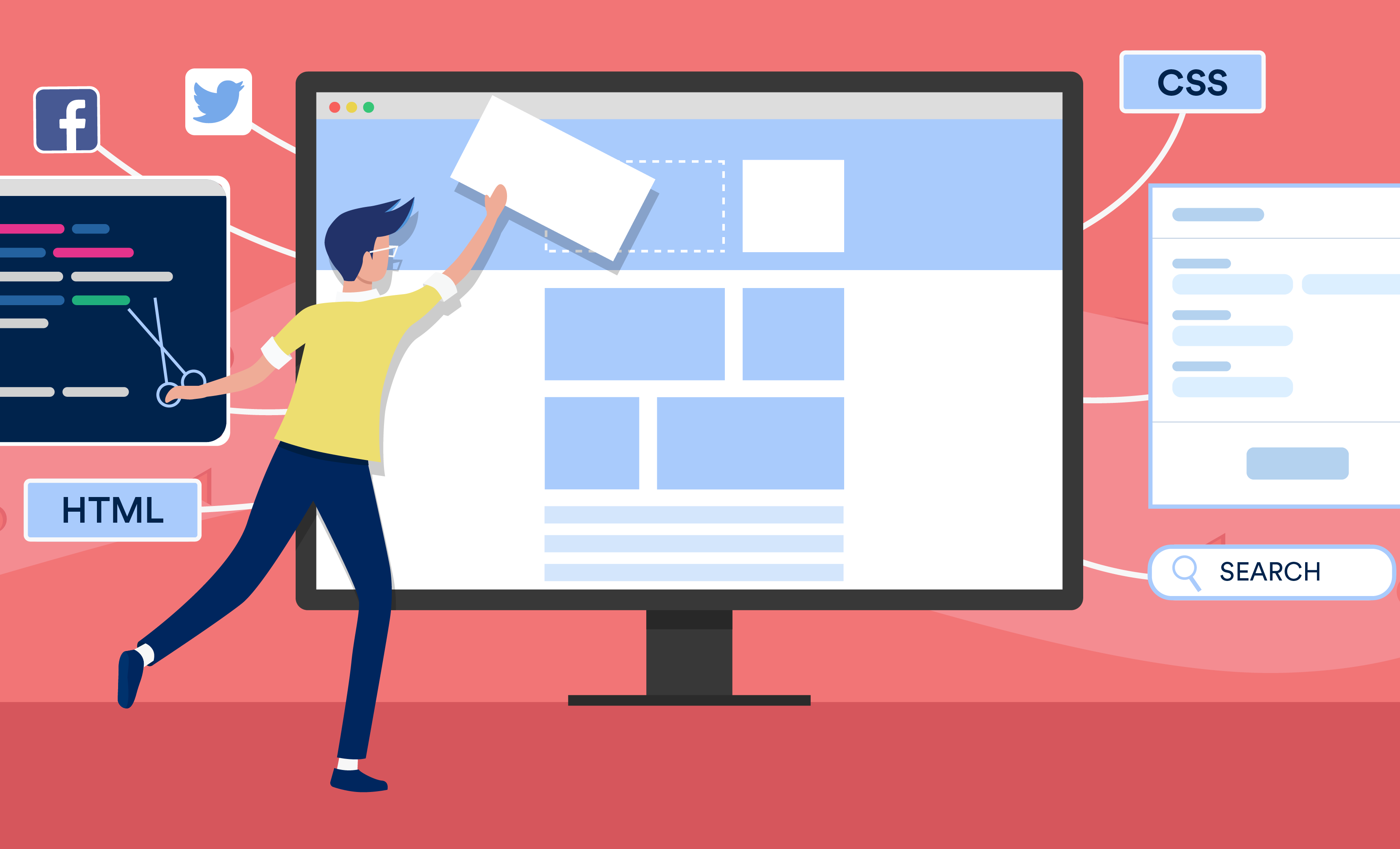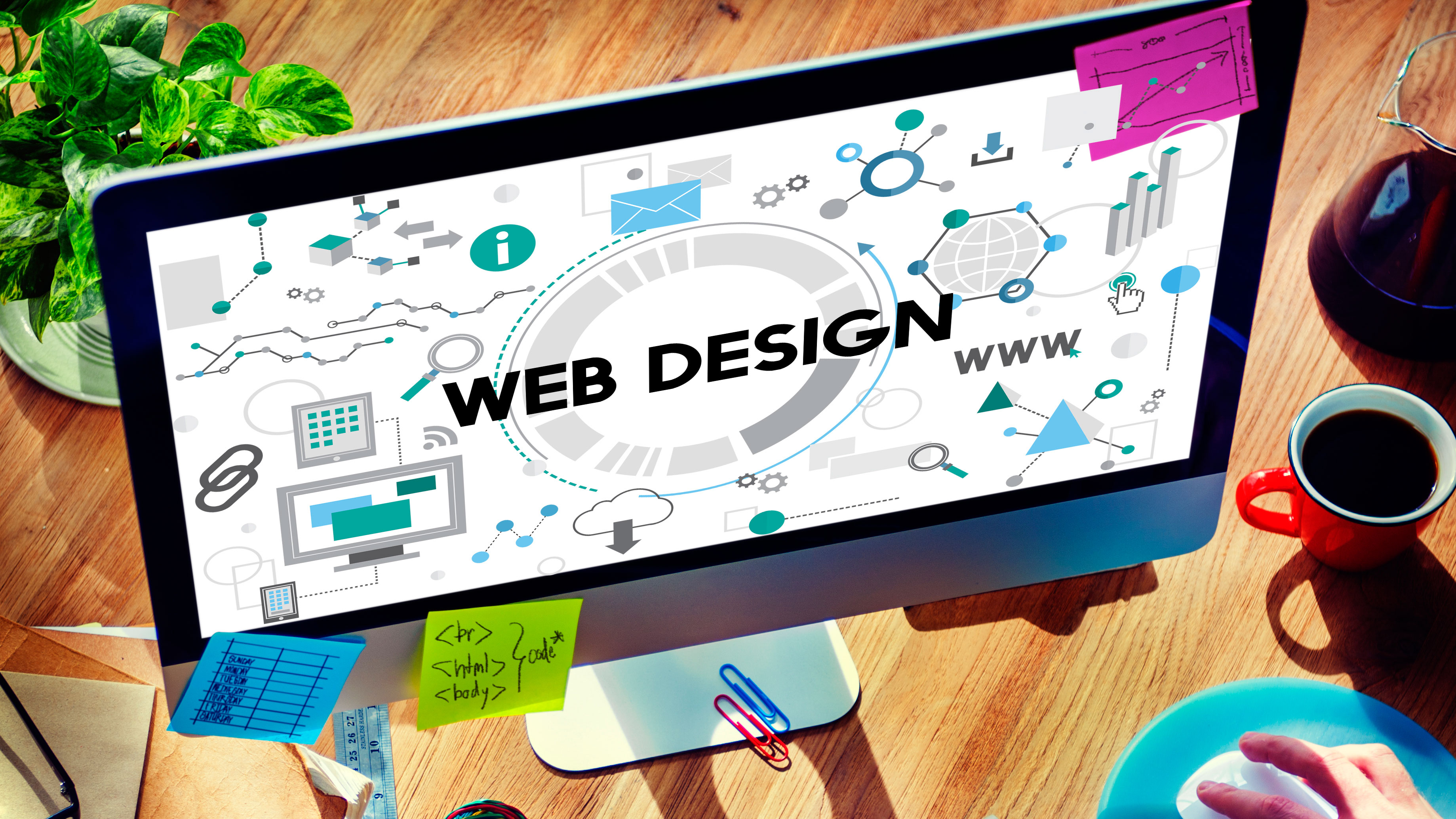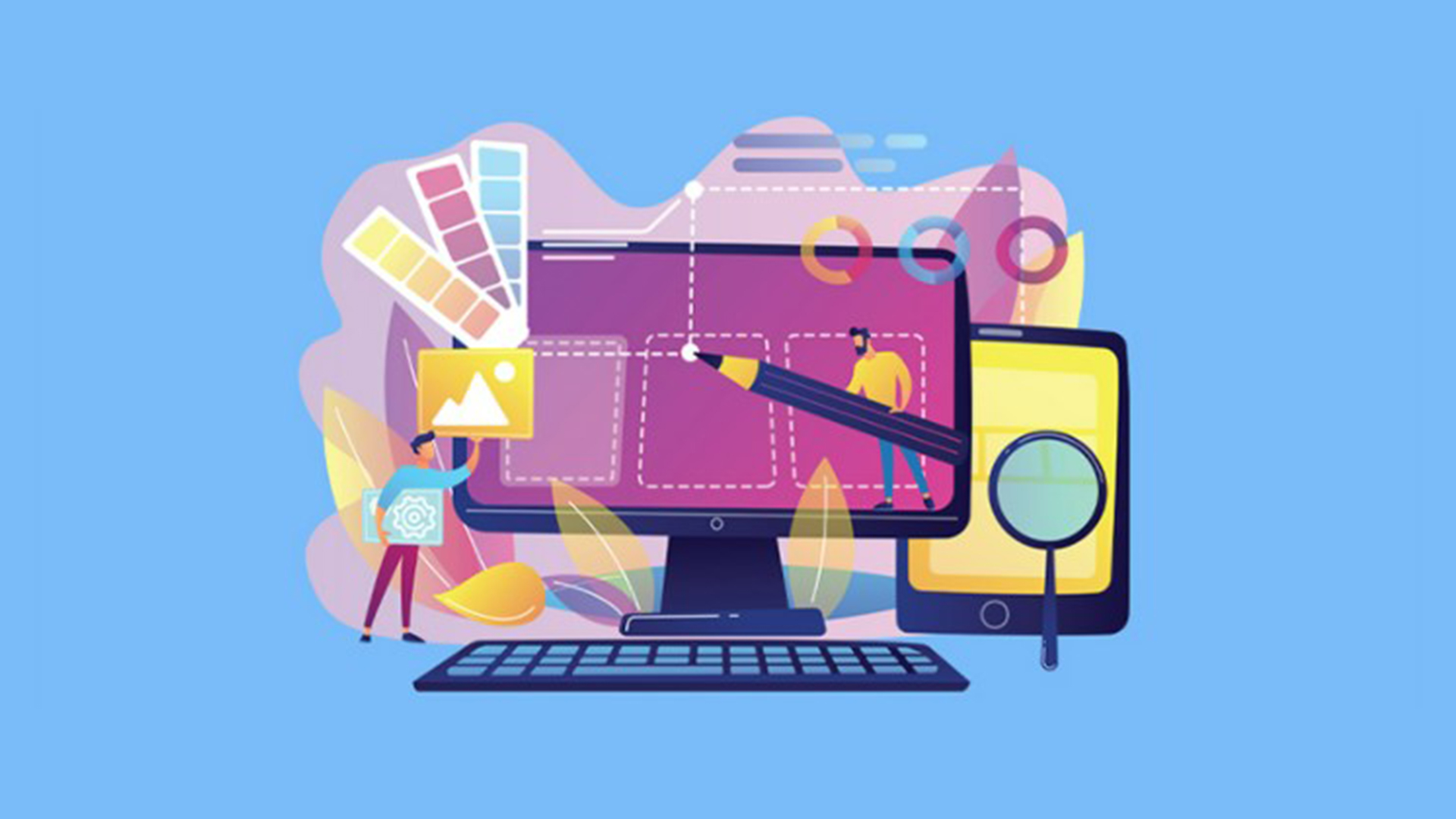All Categories
Featured
Table of Contents
- – Why Is Web Design Important? - 6 Reasons To In...
- – Top Web Design Companies - Find Web Designers...
- – Arch Web Design: Top-rated Web Design Agency ...
- – 53 Web Design Tools To Help You Work Smarter ...
- – Web Design And Applications - W3c Tips and Tr...
- – The Top 10 Most Important Elements Of A Websi...
- – Wicky Design: Philadelphia Web Design Tips a...
- – Learning Web Design: A Beginner's Guide To H...
- – Wicky Design: Philadelphia Web Design Tips a...
- – Web Design Ledger: Homepage Tips and Tricks:
- – Responsive Web Design Certification - Freeco...
Why Is Web Design Important? - 6 Reasons To Invest In Site ... Tips and Tricks:
Quick summary Usability and the utility, not the visual design, identify the success or failure of a site. Because the visitor of the page is the only individual who clicks the mouse and therefore chooses whatever, user-centric style has actually developed as a basic method for successful and profit-oriented web design - web design frederick md.
and the energy, not the visual style, figure out the success or failure of a website. Considering that the visitor of the page is the only individual who clicks the mouse and therefore chooses whatever, user-centric style has actually become a standard method for effective and profit-oriented web style. After all, if users can't use a feature, it may too not exist.
g. where the search box need to be positioned) as it has currently been done in a number of articles; instead we focus on the techniques which, used properly, can result in more advanced design decisions and simplify the process of viewing provided information. Please notice that you might be thinking about the usability-related articles we've released prior to: Principles Of Good Website Style And Reliable Web Style Guidelines, In order to utilize the concepts appropriately we first need to understand how users engage with sites, how they think and what are the fundamental patterns of users' behavior.
Top Web Design Companies - Find Web Designers Here Tips and Tricks:
Visitors look at each brand-new page, scan a few of the text, and click the first link that captures their interest or vaguely looks like the important things they're trying to find. In truth, there are big parts of the page they do not even take a look at. The majority of users browse for something interesting (or useful) and clickable; as soon as some appealing prospects are discovered, users click.
If a page provides users with high-quality material, they are willing to compromise the content with ads and the design of the website. This is the reason that not-that-well-designed sites with top quality content get a lot of traffic over years. Material is more important than the design which supports it.

Users don't read, they scan. Notice how "hot" locations abrupt in the middle of sentences. This is common for the scanning procedure. Extremely easy principle: If a site isn't able to fulfill users' expectations, then designer stopped working to get his task done effectively and the business loses money. The greater is the cognitive load and the less intuitive is the navigation, the more ready are users to leave the website and search for options.
Arch Web Design: Top-rated Web Design Agency For Saas ... Tips and Tricks:
Neither do they scan web page in a linear fashion, going sequentially from one website section to another one. Instead users satisfice; they pick the first affordable option. As quickly as they find a link that appears like it may lead to the goal, there is a very excellent possibility that it will be instantly clicked.
It does not matter to us if we comprehend how things work, as long as we can utilize them. If your audience is going to imitate you're designing billboard, then style great signboards." Users want to have the ability to control their web browser and rely on the consistent information discussion throughout the site.
If the navigation and website architecture aren't instinctive, the number of concern marks grows and makes it harder for users to understand how the system works and how to receive from point A to point B. A clear structure, moderate visual ideas and quickly identifiable links can help users to find their path to their objective.
53 Web Design Tools To Help You Work Smarter In 2022 Tips and Tricks:

claims to be "beyond channels, beyond products, beyond circulation". What does it mean? Given that users tend to explore sites according to the "F"-pattern, these three statements would be the very first aspects users will see on the page once it is loaded. Although the style itself is simple and user-friendly, to understand what the page has to do with the user needs to look for the answer.
Once you've achieved this, you can interact why the system works and how users can take advantage of it. Individuals will not utilize your web site if they can't find their way around it. 2. Don't Misuse Users' Patience, In every project when you are going to offer your visitors some service or tool, attempt to keep your user requirements very little.
Newbie visitors are willing to, not filling long web forms for an account they might never ever use in the future. Let users explore the website and discover your services without forcing them into sharing personal data. It's not affordable to require users to go into an email address to test the function.
Web Design And Applications - W3c Tips and Tricks:
Stikkit is an ideal example for an easy to use service which needs almost nothing from the visitor which is unobtrusive and comforting. Which's what you want your users to feel on your website. Apparently, Mite needs more. Nevertheless the registration can be performed in less than 30 seconds as the form has horizontal orientation, the user does not even need to scroll the page.
A user registration alone is adequate of an impediment to user navigation to cut down on inbound traffic. Manage To Focus Users' Attention, As sites supply both static and dynamic material, some aspects of the user interface attract attention more than others do.
Focusing users' attention to specific locations of the website with a moderate use of visual components can assist your visitors to receive from point A to point B without thinking about how it in fact is expected to be done. The less enigma visitors have, the they have and the more trust they can establish towards the business the website represents.
The Top 10 Most Important Elements Of A Website Design Tips and Tricks:
4. Pursue Function Exposure, Modern web designs are typically criticized due to their technique of directing users with visually appealing 1-2-3-done-steps, large buttons with visual impacts and so on. However from the design viewpoint these elements in fact aren't a bad thing. On the contrary, such as they lead the visitors through the site material in a really simple and user-friendly way.
The site has 9 primary navigation options which are visible at the first look. What matters is that the content is well-understood and visitors feel comfy with the method they engage with the system.
Rather a rate: just what visitors are looking for. An optimum service for reliable writing is touse short and concise phrases (come to the point as quickly as possible), use scannable design (classify the content, use several heading levels, utilize visual elements and bulleted lists which break the flow of consistent text blocks), usage plain and unbiased language (a promo does not need to sound like ad; offer your users some affordable and unbiased factor why they must use your service or remain on your website)6.
Wicky Design: Philadelphia Web Design Tips and Tricks:
Users are hardly ever on a website to delight in the style; in addition, most of the times they are looking for the details in spite of the style - web design frederick md. Aim for simpleness instead of complexity. From the visitors' viewpoint, the finest website design is a pure text, with no advertisements or more content obstructs matching precisely the inquiry visitors utilized or the material they have actually been looking for.
Finch clearly presents the info about the website and provides visitors a choice of choices without overcrowding them with unneeded material. Not only does it assist to for the visitors, however it makes it possible to view the details provided on the screen.
Complex structures are harder to check out, scan, evaluate and work with. If you have the option in between separating 2 design sections by a visible line or by some whitespace, it's normally much better to use the whitespace service. (Simon's Law): the much better you manage to offer users with a sense of visual hierarchy, the easier your content will be to perceive.
Learning Web Design: A Beginner's Guide To Html, Css ... Tips and Tricks:
The same conventions and rules need to be applied to all elements.: do the most with the least amount of hints and visual elements. Four major indicate be considered: simpleness, clearness, distinctiveness, and emphasis. Simplicity consists of just the elements that are crucial for communication. Clarity: all components should be developed so their meaning is not unclear.
Conventions Are Our Pals, Standard style of site elements doesn't result in a dull web site. It would be an use headache if all sites had different visual discussion of RSS-feeds.
understand what they're getting out of a website navigation, text structure, search positioning etc. A typical example from usability sessions is to translate the page in Japanese (presuming your web users don't understand Japanese, e. g. with Babelfish) and supply your functionality testers with a task to discover something in the page of various language.
Wicky Design: Philadelphia Web Design Tips and Tricks:
Steve Krug recommends that it's better to, however take advantages of conventions when you do not. 10. Test Early, Test Frequently, This so-called TETO-principle needs to be used to every web style job as use tests typically provide into significant issues and problems associated with a provided design. Test not far too late, not too little and not for the wrong factors.
Some crucial indicate remember: according to Steve Krug, and screening one user early in the project is better than screening 50 near completion. Accoring to Boehm's very first law, errors are most regular during requirements and style activities and are the more pricey the later on they are removed.
That indicates that you develop something, test it, fix it and then test it again. There might be problems which haven't been discovered during the preliminary as users were virtually obstructed by other problems. use tests. Either you'll be pointed to the problems you have or you'll be pointed to the absence of significant style defects which is in both cases a beneficial insight for your project.
Web Design Ledger: Homepage Tips and Tricks:

This holds for designers as well. After you have actually dealt with a site for few weeks, you can't observe it from a fresh viewpoint any longer. You know how it is developed and for that reason you know exactly how it works you have the knowledge independent testers and visitors of your site wouldn't have.
It can be connected to other locations such as graphic design, user experience, and multimedia arts, however is more appropriately seen from a technological viewpoint. It has become a big part of people's daily lives. It is hard to envision the Internet without animated graphics, various styles of typography, background, videos and music.

During 1991 to 1993 the Internet was born. Text-only pages might be viewed utilizing an easy line-mode internet browser. In 1993 Marc Andreessen and Eric Bina, created the Mosaic browser. At the time there were several internet browsers, however the bulk of them were Unix-based and naturally text heavy. There had been no integrated technique to graphic style aspects such as images or sounds.
Responsive Web Design Certification - Freecodecamp.org Tips and Tricks:
The W3C was developed in October 1994 to "lead the Internet to its full potential by developing typical procedures that promote its development and guarantee its interoperability." This dissuaded any one business from monopolizing a propriety web browser and programs language, which might have modified the result of the World Wide Web as a whole.
As this has taken place the technology of the web has likewise moved on. There have actually also been considerable changes in the method people use and access the web, and this has altered how websites are developed.
Learn more about Lovell Media Group LLC or TrainACETable of Contents
- – Why Is Web Design Important? - 6 Reasons To In...
- – Top Web Design Companies - Find Web Designers...
- – Arch Web Design: Top-rated Web Design Agency ...
- – 53 Web Design Tools To Help You Work Smarter ...
- – Web Design And Applications - W3c Tips and Tr...
- – The Top 10 Most Important Elements Of A Websi...
- – Wicky Design: Philadelphia Web Design Tips a...
- – Learning Web Design: A Beginner's Guide To H...
- – Wicky Design: Philadelphia Web Design Tips a...
- – Web Design Ledger: Homepage Tips and Tricks:
- – Responsive Web Design Certification - Freeco...
Latest Posts
Web Design Definition - Techterms Tips and Tricks:
Arch Web Design: Top-rated Web Design Agency For Saas ... Tips and Tricks:
Collaborate & Create Amazing Graphic Design For Free Tips and Tricks:
More
Latest Posts
Web Design Definition - Techterms Tips and Tricks:
Arch Web Design: Top-rated Web Design Agency For Saas ... Tips and Tricks:
Collaborate & Create Amazing Graphic Design For Free Tips and Tricks: